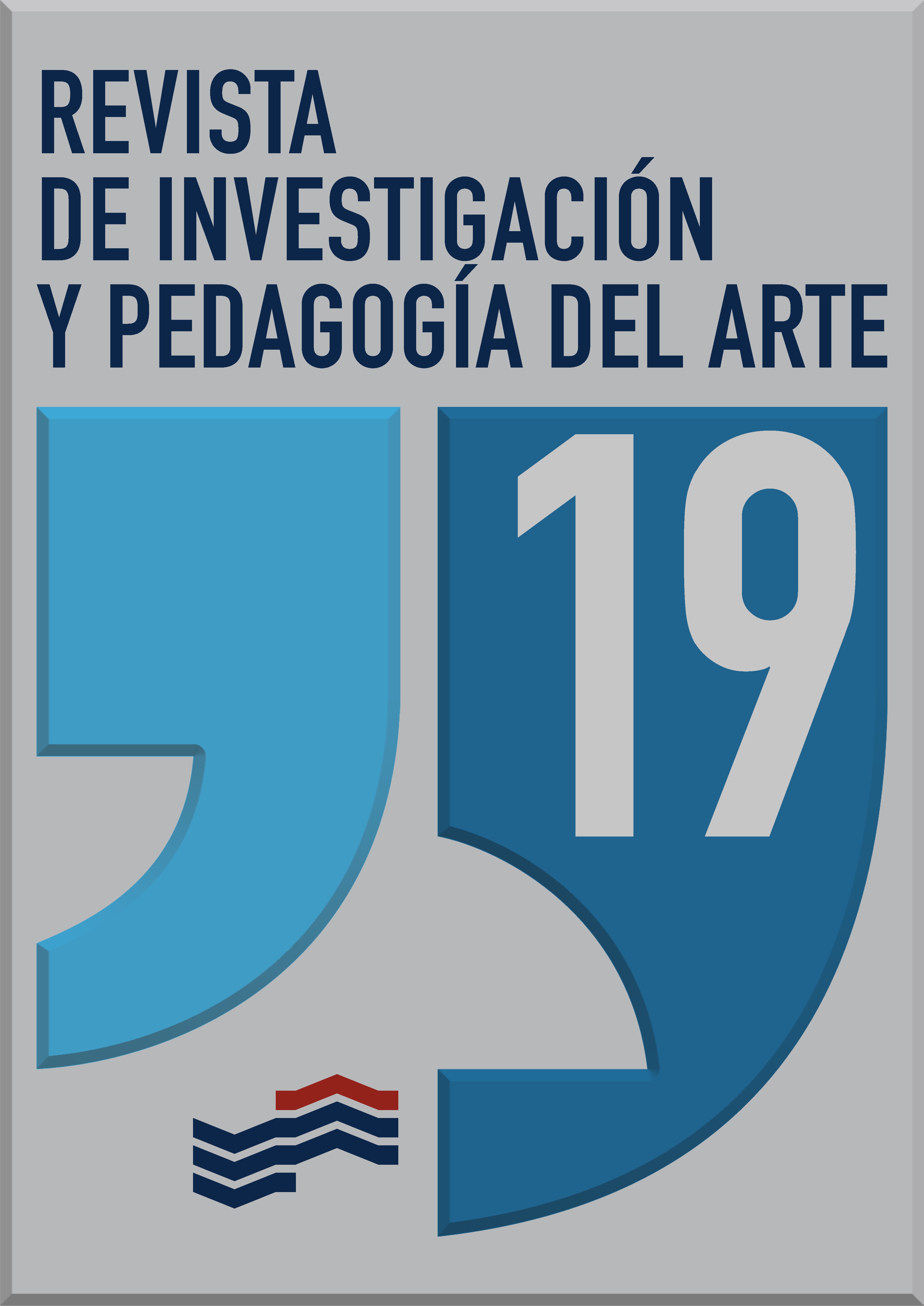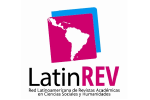Sensitive knowledge, aesthetics and the body: inquiries into visual arts teachers education
DOI:
https://doi.org/10.18537/ripa.19.01Keywords:
cognitive style, aesthetic education, sensory experience, embodiment, teaching experienceAbstract
This research article explores the interplay of three key human dimensions —cognitive (understood as sensitive knowledge), aesthetic, and corporal— in the teaching practices of artistic creation carried out by pre-service visual arts teachers. Drawing on an ethnographic approach and analytical tools from Grounded Theory, the study examines how these dimensions shape pedagogical actions during artistic creation in the classroom. The findings reveal that the cognitive dimension contributes through informative, modeling, and integrative roles. The aesthetic dimension functions in orientative, explorative, and attentive ways, supporting a sensorially rich engagement with artistic materials and students. The corporal dimension emerges in bodily representations, social interactions and embodied dispositions toward teaching. Together, these dimensions operate in a dynamic, interwoven process that redefines teaching as an integral, situated, and sensitive experience. The article argues that recognizing and integrating these dimensions is essential to fostering a more holistic, reflective, and context-aware teacher education in the visual arts.
Downloads
References
Ahmed, S. (2015). La política cultural de las emociones. UNAM.
Arendt, H. (2011). La condición humana. Paidós.
Aschieri, P. (2013). Hacia una etnografía encarnada: La corporalidad del etnógrafo/a como dato en la investigación. X RAM- Reunión de Antropología del Mercosur- Situar, actuar e imaginar antropologías desde el Cono Sur. GT 11: 10 al 13 de julio de 2013.
Bajtín, M. M. (2000). Yo también soy (Fragmentos sobre el otro). Taurus.
Brea, J. (Ed) (2005). Estudios visuales, la epistemología de la visualidad en la era de la globalización. AKAL.
Brudzińska, J. (2009). Aisthesis. En H. R. Sepp & L. Embree (Eds.), Handbook of Phenomenological Aesthetics (vol. 59, pp. 9-15). Springer Netherlands. https://doi.org/10.1007/978-90-481-2471-8_2
Butler, J. (2002). Cuerpos que importan. Paidós.
Cápona González, D. (2019). Para una estética de la vida cotidiana: Naturaleza, potencia y cuerpo en Spinoza y Marx. ALPHA: Revista de Artes, Letras y Filosofía, 2(49), 9-24. https://doi.org/10.32735/S0718-2201201900049739
Contreras, J. y Pérez, N. (2013). Investigar la experiencia educativa. Ediciones Morata.
Efland, A. (2004). Arte y Cognición. Octaedro-EUB.
Engeström, Y. (2001). Los estudios evolutivos del trabajo como punto de referencia de la teoría de la actividad: El caso de práctica médica de la asistencia básica. En Estudiar las prácticas. Perspectivas sobre actividad y contexto (pp. 78-118). Amorrortu Editores S.A.
Foucault, M. (2003). Vigilar y castigar. Siglo XXI.
Gardner, H. (1990). Educación artística y desarrollo humano. Paidós.
Goodman, N. (1990). Maneras de hacer mundos. La Balsa de la Medusa.
Goodman, N. (2010). Los lenguajes del arte. Paidós.
Highmore, B. (2004). Homework: Routine, social aesthetics and the ambiguity of everyday life. Cultural Studies, 18(2-3), 306-327. https://doi.org/10.1080/0950238042000201536
Ingold, T. (1999). Three in One: On dissolving the distinctions between body, mind and culture. https://lchc.ucsd.edu/MCA/Paper/ingold/ingold2.htm
Ingold, T. (2015). Contra el espacio: Lugar, movimiento, conocimiento. Revista Latinoamericana de Políticas y Acción Pública, 2(2), 9-26. https://doi.org/10.17141/mundosplurales.2.2015.1982
Kjorup, S. (2006). Another way of knowing. Baumgarten, Aesthetics and the concept of Sensuous Cognition. Bergen National Academy of the arts, Roskilde University.
Laignelet, V. (2011). Encuentro "Creación, pedagogía y políticas del conocimiento". Universidad Jorge Tadeo Lozano.
Le Breton, D. (2010). Cuerpo Sensible. Ediciones Metales Pesados.
Mandoki, K. (2008). Estética cotidiana y juegos de la cultura (2. Ed.). Siglo veintiuno.
Mannoni, M. (1979). La educación imposible. Siglo XXI.
Martín-Barbero. J. (2009). Educación Expandida. Ciudad Educativa. De una sociedad con sistema educativo a una sociedad de saberes compartidos. ZOMOS98.ORG.
Merleau-Ponty, M. (1993). Fenomenología de la percepción. Editorial Planeta.
Pedraza, Z. (2009). En clave corporal: conocimiento, experiencia y condición humana. Revista Colombiana de Antropología, 45(1), 147-168, enero-junio. Instituto Colombiano de Antropología e Historia.
Planella, J. (2017). Pedagogías de lo Sensible. Cuerpo, cultura y educación. Universidad de Barcelona.
Rico, B. A. (2006). Las fronteras del cuerpo. Editorial Joaquín.
Saito, Y. (2007). Everyday aesthetics. Oxford University Press. https://doi.org/10.1093/acprof:oso/9780199278350.001.0001
Saito, Y. (2024). Aesthetics of the Everyday, en E. N. Zalta & U. Nodelman (Eds.), The Stanford Encyclopedia of Philosophy (Summer 2024). Metaphysics Research Lab, Stanford University. https://plato.stanford.edu/archives/sum2024/entries/aesthetics-of-everyday/
Sanjurjo, L. O., & Caporossi, A. (2009). Los dispositivos para la formación en las prácticas profesionales (1a ed.). Homo Sapiens.
Sepp, H. R., & Embree, L. (Eds.). (2010). Handbook of Phenomenological Aesthetics (vol. 59). Springer Netherlands. https://doi.org/10.1007/978-90-481-2471-8
Todd, S., Hoveid, M. H., & Langmann, E. (2021). Educating the Senses: Explorations in Aesthetics, Embodiment and Sensory Pedagogy. Studies in Philosophy and Education, 40(3), 243-248. https://doi.org/10.1007/s11217-021-09776-7
Varela, F. (2013). Conocer. Las ciencias cognitivas: tendencias y perspectivas. Cartografía de las ideas actuales. Editorial Gedisa.
Van Manen, M. (1995). On the epistemology of reflective practice. Teachers and teaching: theory and practice. Vol 1. Paidós.
Wickman, P.-O. (2006). Aesthetic experience in science education: Learning and meaning-making as situated talk and action. Lawrence Erlbaum Associates. https://doi.org/10.4324/9781410615756
Zambrano. M. (1989). Notas de un método. Editorial Mondadori.
Published
Issue
Section
License

This work is licensed under a Creative Commons Attribution-NonCommercial-ShareAlike 4.0 International License.










